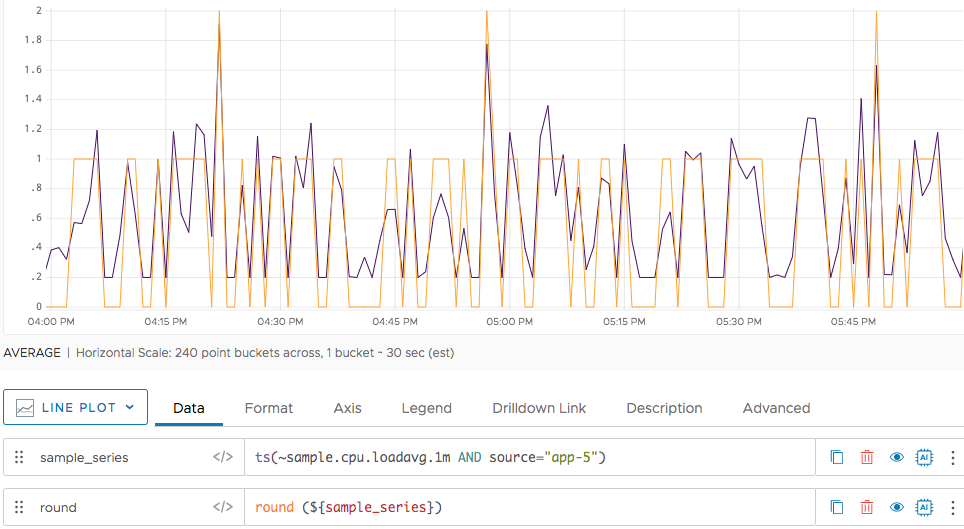Summary
round(<tsExpression>)
round(<toMultiple>, <tsExpression>)
Returns the nearest integer for each data value in the time series described by the expression. Supports rounding toward a number whose multiple you want to round towards.
Parameters
| Parameter | Description |
|---|---|
| tsExpression | Expression that describes the time series to return rounded values for. |
| toMultiple | Number whose multiple you want to round toward (integer or decimal) |
Description
The round() function returns the nearest integer for each data value in the time series described by the expression, by mapping any data value with a fractional part to the integer that is closest in value.
round() returns a separate series of results for each time series described by the expression.
Examples
The two different signatures of the function are usually used in different use cases.
Example 1: Use round() for Precision
One use of round() is for achieving precision. For example, suppose that a series mySeries returns 0.564, 0.435, 0.777. The math you need to do requires 1 decimal point. You can use round() with the nearestNumber parameter like this:
round(0.5, mySeries)
This call returns 0.5, 0.5. 1.0.
Example 2: Visualize round() Results
Here’s a query that returns a time series that reports positive fractional values between .2 and 1.2. Here’s the chart, with the color set to purple.

Now we apply round() to our original query. Notice that the values below .5 are mapped to 0, and the values between .5 and 1.2 are mapped to 1. The original query is still in purple, the round is set to orange.
